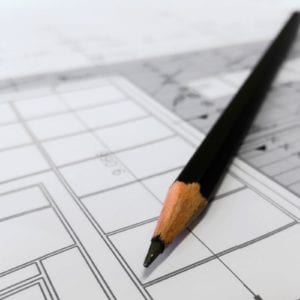
While educational approaches used to subscribe to a “one-size-fits-all” philosophy, observation, testing, and psychology have revealed, by degrees, a different picture over the last few decades. Different students learn different ways, and forcing all to adhere to a singular style of learning has the potential of limiting two-thirds – or more – of any given class.
At NewSchool, we incorporate hands-on learning and training techniques as an integral part of our teaching strategy in our academic programs. We know that not all students are the same, which is why we incorporate these progressive teaching methods in all of our classrooms. In this article, we’ll explore the benefits of hands-on learning for students, including a variety of learning styles and training techniques that are effective both in and out of the classroom – and how they can serve you in your future career.
What Is The Best Way For A Student to Learn?
‘Best’ is a subjective term, but certain learning styles offer clear advantages over others, depending on the subject(s) of study. Below are several core learning styles commonly practiced in the classroom from grade school to college:
- Visual learning, often called “book” learning, has long been the prevailing method, compelling students to read, remember, and recite the information on a page in reports, tests, and quizzes. This method is most frequently used by teachers during early childhood for school-aged children, where information is traditionally taught using picture books, flashcards, and later, textbooks.
- Auditory learning, most easily observed in the lecture formats of certain college courses, relies upon the student to take in an instructor’s information through listening to them live, or via a pre-recorded session, requiring students to take notes accordingly throughout the process. This form of learning may or may not encourage discussion, depending on the preferences of a given professor.
- Kinesthetic learning is the third and most intriguing of the learning styles, mingling elements of both visual and auditory learning and compelling full participation from the student. Named after kinesiology, the study of human movement, it’s most commonly referred to as “hands-on” learning. This blended learning technique is one of the key drivers in trade school learning, as it allows students to become comfortable and familiar with the hands-on processes and skills of what will hopefully become their careers, rather than simply watching or reading about them.
Does Hands-On Learning Work For Everyone?
Barring severe shyness or anxiety, hands-on learning is uniquely positioned to support or elevate any type of learner. Everyone has their own specific needs when it comes to their personal learning style. Students that prefer to listen to their lesson can hear the instructor as they follow along, and those that do well with visuals can watch the instructor, duplicating his or her steps after they’re finished. Rather than a learning style alone, hands-on learning should be a functional part of every lesson plan, if only to familiarize students especially in the design degree and science studies with the models and materials they’ll use later in either professional, post-graduate employment or research positions.
Why Is Hands-On Learning So Powerful?
Hands-on learning (also known as experiential learning) is the biology lab that teaches a future scientist to be comfortable with dissection; the vehicle shop experience that helps a future mechanic understand the nuances of an engine with not just their eyes and ears but also with actual hands-on training. It gives students the opportunity to self-correct any educational missteps in the moment – with professional guidance at arm’s reach. While notes can be copied down incorrectly and the thread of learning can get buried under a teacher that talks too quickly or a poorly-written textbook, live examples of core concepts are registered in the brain as holistic experiences, giving the student’s mind more “anchors” to tie the memory to.
The sound two materials make when they’re joined together, the scent of a certain solvent, the vivid color of a particular plant leaf – these all become easy-access sensory “bookmarks” for bringing the memory to the surface when it needs to be reviewed. This works for every field of study as well, not just the sciences – that’s why so many condensed “how-to” courses use the format. People simply learn better when they’re allowed to roll up their sleeves and experience the subject matter in a simulation, rather than being distanced from it by a third-hand narrative experience or a dry passage of text.
How Does Hands-On Learning Help A Career?
While learning should ideally translate perfectly into practice, the reality is that it seldom does. Just as someone who may have only read a particular word in books might mispronounce it the first time they speak it aloud, self-focused learning methods may not reveal mistakes until the stakes are high. Particularly in fields where physical precision is important – manufacturing, architecture, medical studies, and so on – these innocent mistakes can become big problems if they aren’t identified and addressed beforehand. Hands-on learning helps instructors recognize and correct these mistakes while still in the learning process, dramatically reducing the chances of the same mistake cropping up after the training course is finished.
Hands-on learning also provides a student with the opportunity to safely make mistakes and learn organically through trial and error. Rather than experimenting when a job is on the line, they can experiment with new ideas and satisfy curiosity at their own natural pace without worrying about damaging an important project. This allows them to practice their critical thinking skills and utilize the knowledge they’ve accumulated during their training program. Humans naturally learn by making mistakes and determining how to either fix or avoid them, and the more times the cycle is repeated, the better a student becomes at meeting those challenges without hesitation. To put it another way, practice makes perfect!
Transferring Hands-On Learning From Classroom To Workplace
As most recent college graduates learn “the hard way,” life in the real world has very few things in common with life in the classroom. Real-world situations aren’t usually clear-cut or easily solved, a variety of different factors need to be considered and weighed, and sometimes real-world solutions – while they do work – aren’t very tidy. Hands-on learning can help lessen the imbalance between academia and employment by familiarizing students with the environments they’ll be confronted with.
An employer isn’t, for example, likely to hand a worker a document and give them a multiple-choice quiz on it a week later. Far more plausible is a sudden emergency situation that needs to be addressed, with little time to consider options and actions – therein lies the value of the hands-on experience. Such learning exercises can enable a virtual walk-through of actions and reactions, as hypothetical circumstances can be emulated and practiced by imposing time limits. Instructors may also wish to “surprise” students in the form of hands-on exercises, presenting them with unexpected problems and unique materials to work with.
Depending on the length of time spent in a hands-on environment and the complexities of the lessons, students may also be able to list certain experiences on their resume. For example, bullet points such as these could pique the interest of employers that might otherwise pass over a candidate without time “on the job”:
- Worked with (X) program/machine/tool/material several times a week.
- Built (X) in conjunction with a team of 5 students.
- Developed (X) from raw materials in accordance with the (X) method.
- Solved (X) problem using only (X) materials.
How Does Hands-On Learning Help Students?
Properly structured, hands-on learning encourages students to think outside of the proverbial box, coaxing them to experiment with and explore the problems, tools, and substances they’ll work with regularly in their chosen careers.
From an educator’s perspective, this learning style also offers a welcome respite from the rote repetition of “book learning” or lecturing. No teacher likes to think about it, lest their teaching confidence slip, but the fact of the matter is that adults do have a limited attention span, even when they’re earnestly trying to pay attention. The sound of an instructor’s voice may become a drone after an hour of class, or the words in a passage of text may blur together as eyes become tired or the thought of lunchtime intrudes. Legs and backs may get restless from sitting in place, and thoughts drift as students become a passive – rather than an active – participant in their classroom experience. Gossip and private conversations can become a distraction as students away from the front row seek alternate stimulation during class hours.
Hands-on learning uproots this tired, traditional classroom instruction, allowing students to move, discuss, interact with, and truly engage with in the lesson. Rather than bored teammates simply waiting for their proverbial turn at bat, they are instead immersed in the actual functional points of the task, figuratively getting their hands dirty with the materials, techniques, and concepts being taught. Rather than a chore – listen, take notes, remember – it becomes that magical organic experience and students retain it the same way they would visiting a museum, or trying a new type of food. It’s interesting, and thus the subject matter becomes easier to recall and more enticing to explore.
No restless legs, no wandering thoughts, no dozing off during class – instead, they get to tackle challenges alongside classmates, delving into a “gamification” structure that encourages – or even directly endorses, depending on the instructor’s techniques – competition as each student attempts to be the first to create a result, or otherwise answer a challenge using their materials.
How Should Students Prepare For Hands-On Learning?
To receive the most benefits out of this valuable teaching method, students should arrive to each lesson ready to explore the projects and components in front of them. That means:
- Familiarizing themselves with any safety procedures beforehand
- Ensuring they have any necessary personal protective equipment (PPE) ready to use
- Arriving on time, so as not to miss preliminary show-and-tell steps
- Using hands-free recording devices so they can focus on doing rather than note-taking
- Never missing a class (barring emergencies) so that they always feel comfortable with the current expertise level being demonstrated
- Getting enough sleep and eating/drinking before class to keep the mind sharp
- Setting aside extra time before or after a class to work with an instructor on any problem areas
Hands-on learning is an incredibly powerful tool, but it won’t replace traditional learning entirely. While it’s beneficial to get excited about hands-on sessions in your field of study, don’t neglect reviewing your notes, or collaborating with peers to ensure you understand important concepts. If you feel like you understand your hands-on session well but struggle with test and quiz concepts, be sure to confer with your instructor to bring your learning experience back into balance. Just as all students learn in different core methods, their ideal mix of the three learning methods will vary as well.
How Does Hands-On Learning Work In Groups?
Just as employees are directed to work in teams on important job projects, hands-on learning typically incorporates group work as well. To ensure the best experience for all students involved, each participant should be aware of his or her contributions and time spent with materials, stepping back to give others ample experience as well. While it’s normal and understandable to get into a groove while problem-solving a hands-on challenge, if you’re placed in a group, remember that your teammates are counting on you to support them as well.
Hands-on learning is a decidedly personal experience, but it should also be a communal one whenever possible – you’ll need to work well with others in an employment position, after all. Instead of allowing impatience or a competitive streak to spoil the experience, consciously spend time watching how others interact with the same problems you may already know how to solve.
- Did they use the materials in unexpected or unfamiliar ways while still solving the issue?
- Did they use more or less of a material than you would have done yourself?
- Did they tackle a certain step with more expertise than you’ve been able to? How?
- What did they struggle with while trying to solve the project or scenario?
Remember: if you allow your eagerness to get to the hands-on portion of learning eclipse your desire to learn, you could be missing important additional lessons from your classmates’ experiences with hands-on materials. You could even learn a new skill from them. Treat your classmates as part of the hands-on lesson – though not literally, of course. Ask them about their experiences with your mutual materials and tools, and don’t be afraid to ask them to demonstrate techniques they’re particularly skilled with to learn from them.
Hands-on learning is a rewarding way for students to explore, retain, and experiment with all aspects of their chosen field of study, particularly at the collegiate/trade school level of career development and education. The potentials are essentially limitless, and the amount of preparation and confidence this method offers can’t be overstated. Even if a student struggles to pay attention to a spoken lecture or a lengthy text, they could find true academic breakthrough on the other side of a hands-on lesson. The most challenging career fields demand expertise, and one of the best ways to acquire it is to reach out and grab it – quite literally – with hands-on learning.
For more information on NewSchool’s hands-on learning philosophy, and opportunities for design scholarships contact our Enrollment Team!









 619-684-8800
619-684-8800








